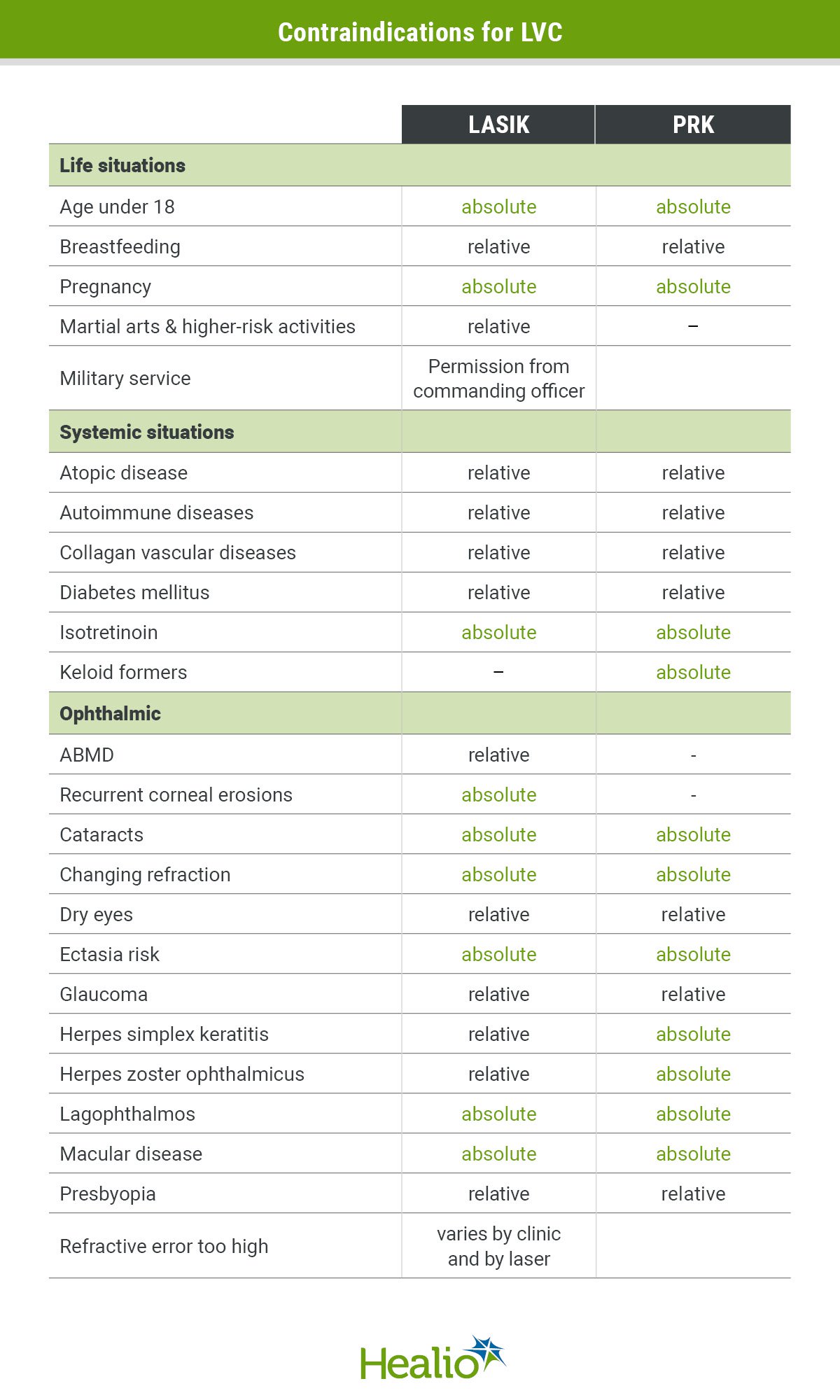BLOG: Know the contraindications to LASIK, PRK
One of the most difficult things we ever have to tell a patient is: “You are not a good candidate for LASIK.” When you find yourself having to tell your patient this, you want to be very certain you know what you’re talking about.

This three-part series will cover the absolute and relative contraindications to both LASIK and PRK. Part 1 concerns life considerations, and parts 2 and 3 will cover systemic and ophthalmic conditions.

Age. There are a number of situations evident solely from your patient’s intake form that can constitute absolute or relative contraindications to laser vision correction (LVC). The first is age; LVC is not approved by the FDA for any patient under the age of 18 years. Even this is considered premature by most surgeons, who would prefer to wait until the mid-20s, when refractive error becomes more stable. Because some corneal diseases, keratoconus in particular, can wait until the 20s to manifest, delaying surgery for a few years during this volatile period can reveal a few high-risk situations.
While there is no universal upper age limit for LVC, we start to consider other refractive options as a patient enters their 50s. A myopic patient receiving LVC in their 50s will be immediately plunged into the purgatory of presbyopia, a dubious benefit. In addition, patients in this age category are often beginning to show the early signs of cataracts, and while it is rare that they need cataract surgery, any mild blur from their crystalline lenses has enough potential to degrade the outcome that few surgeons are willing to operate.
LVC is occasionally used on pseudophakic patients to correct unwanted refractive error. PRK is often chosen for this group due its lower risk of worsening dry eye.

Pregnancy. Pregnancy is an absolute contraindication to LVC, for several reasons. Pregnancy can cause refractive instability and dry eye leading to poor long-term outcomes. Also, there is a small risk with any LVC procedure of needing to prescribe oral steroids (for instance, in the case of severe diffuse lamellar keratitis), and steroids should be avoided if possible during pregnancy.
In general, surgeons do not encourage refractive surgery during breastfeeding either, for the same reasons as with pregnancy, although some surgeons will be willing to consider surgery if there were no refractive changes during pregnancy.
Military. In LVC’s infancy, having a LASIK flap was enough to disqualify anyone from serving in the U..S military as a pilot, in special forces or often even in any service at all, and many people chose PRK to avoid the flap. There is still an entrenched pro-PRK culture in many military circles. However, the development of the femtosecond laser, and its ability to create an inverted “manhole design” side cut, greatly reinforced the strength of the flap and reduced the chance of a dislocation. Since then, many (but not all) divisions have revised their objection to LASIK.
The regulations still vary unpredictably among the armed forces, however, making it impossible for us to give reliable recommendations. Optometrists should advise anyone in the armed forces to seek explicit written permission from their commanding officer prior to undergoing LASIK or PRK. If LVC is not allowed, they could consider implantable collamer lenses.
Occupational. Some occupations and activities present a higher risk of flap dislocation, especially the martial arts and basketball. People who work with chickens are also at somewhat higher risk, as these birds can have a tendency to peck at eyes. Candidates in any of these activities should consider PRK instead of LASIK.
In our next post, part 2 of the 3-part series, we’ll talk about the systemic contraindications to LASIK and PRK.
For more information:
Oliver Kuhn-Wilken, OD, is a staff optometrist at Pacific Cataract & Laser Institute in Tualatin, Oregon. Please email him with any comments, questions or requests for upcoming topics at oliver.wilken@pcli.com.
Collapse
